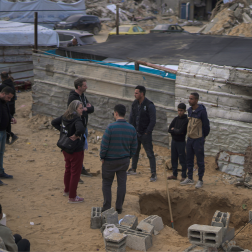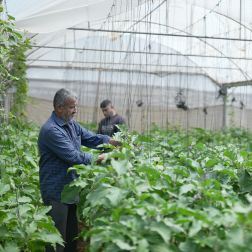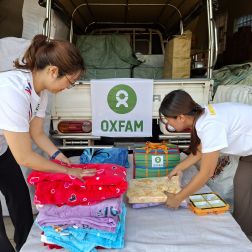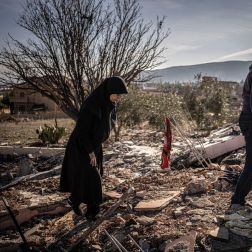- 3 mins read time
- Published: 13th September 2017
The lean face of drought in Wajir county, northern Kenya
By Blandina Bobson – Oxfam Monitoring and Evaluation Officer, Wajir, KENYA
The face of drought in Wajir County, in Kenya’s north, is ugly. The land is bare and expansive, multiple whirlwinds sweeping across every now and then, which local myths call ‘the devil’. It is scrawny animals feeding on what seems like invisible grass on the ground or camels browsing on thorny remains of what used to be green leafy bushes. Masses of evidently emaciated livestock hurdling to quench their thirst around water points, after hours-long treks in search of the same. Women will wait patiently in line to fill their jerry cans to take back home.

Dead livestock are a common sight in many parts of Wajir, in northern Kenya, which is in the grip of a severe drought. Photo: Katie G. Nelson/Oxfam
Families have become increasingly vulnerable. Men are struggling to provide for their families, their faces are sad and strained as they stare into the unknown future, while the eyes of women and children dart about in hope whenever ‘visitors’ drop by their villages.
In July, an assessment of the drought crisis in the country revealed that 3.4 million people in Kenya are now severely hungry and need urgent food assistance. Of these, 800,000 were projected to be in a more serious food situation by September.
“I used to buy my children milk but I can’t afford it any more because business is really down. The livestock owners who used to be my customers have migrated with the little livestock they have left,” said Rukia, a widow and a mother of 5 children who runs a small business in Dambas village.

Rukia Billow (24) at a Water ATM – an electronic meter, which makes water available 24 hours a day – in Hadado Town, Northern Kenya. Photo: Katie G. Nelson/Oxfam
Oxfam – supported by ECHO, the humanitarian arm of the European Union– is providing cash assistance for food, water and other essentials to 3,000 families in parts of Wajir. This assistance complements that of the Kenyan government through the National Drought Management Authority (NDMA), which is now helping over 54,000 families with similar aid. But really this is only a drop in the ocean given the fast deteriorating situation.
Despite offering a reprieve, this aid does not come without its fair share of challenges. Oxfam has spoken with families who have been forced to share part of their monthly cash assistance of KES 2,700 (€25/£23) with those in their communities not directly targeted by the programme, yet are in critical need of help. This is a strong indication that even those that were thought to be less vulnerable have also lost the little muscle they had to deal with the effects of the drought.
Helping the most vulnerable
“We are illiterate and vulnerable, if we raise complaints we might not get our cash,’’ said Kasim Makala, 46-year-old mother of eight, who has previously received similar help.
While we must recognise the efforts of those who are responding to the crisis, there is certainly more that should be done now to ensure that affected communities get the help they need. More resources are urgently required to reach the rising scale of need.
Everyone must play their part. Local, national and international actors must complement the efforts being undertaken by the Kenyan government and humanitarian agencies and ensure that affected communities are able to cope with the effects of the prolonged drought.
Across East Africa, Yemen and north-east Nigeria, some 30 million people are experiencing alarming hunger, surviving only on what they can find to eat. Famine is already likely happening in parts of northern Nigeria, while Yemen and Somalia are on the brink. This is the largest hunger emergency in the world.
Oxfam is there
Oxfam is on the ground in all areas, reaching the most affected with the emergency help they need to survive. We are:
· Working with local partner organisations who provide emergency food distributions and work with vulnerable people to produce their own food and other income;
· Providing emergency water and sanitation, to stop the spread of diseases like cholera and diarrhoea;
· Providing cash and vouchers so people can purchase the food they need to survive;
· Trucking in urgently-needed water to the worst drought-affected areas;
· Constructing showers and toilets for those who have been forced to flee their homes.
What you can do now




